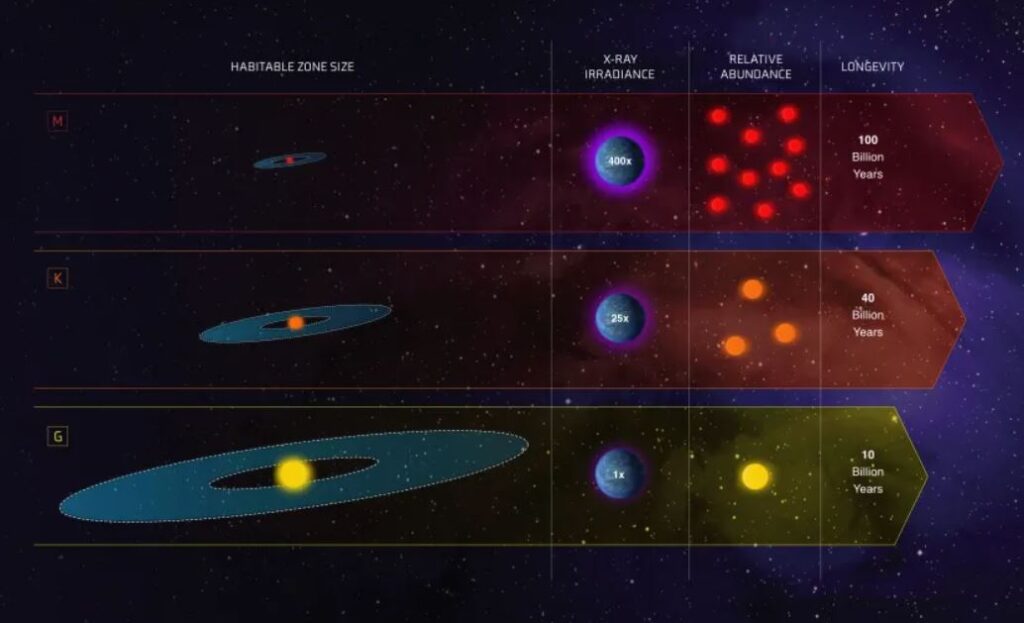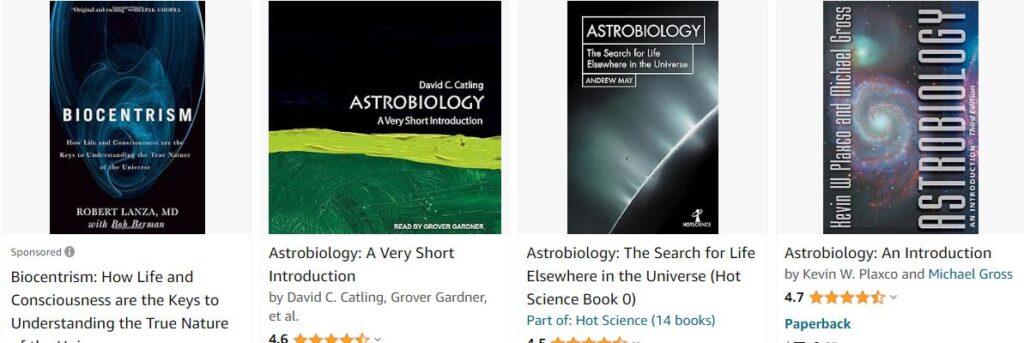
Exoplanets are common in our galaxy, and some even orbit in the so-called habitable zone of their star. NASA’s James Webb Space Telescope has been busy observing a few of these small, potentially habitable planets, and astronomers are now hard at work analyzing Webb data. We invite Drs. Knicole Colón and Christopher Stark, two Webb project scientists at NASA’s Goddard Space Flight Center, to tell us more about the challenges in studying these other worlds:
“A potentially habitable planet is often defined as a planet similar in size to Earth that orbits in the ‘habitable zone’ of its star, a location where the planet could have a temperature where liquid water could exist on its surface. We currently know of around 30 planets that may be small, rocky planets like Earth and that orbit in the habitable zone. However, there is no guarantee that a planet that orbits in the habitable zone actually is habitable (it could support life), let alone inhabited (it currently supports life). At the time of writing, there is only one known habitable and inhabited planet—Earth.
“The potentially habitable worlds Webb is observing are all transiting exoplanets, meaning their orbits are nearly edge-on so that they pass in front of their host stars. Webb takes advantage of this orientation to perform transmission spectroscopy when the planet passes in front of its star. This orientation allows us to examine the starlight filtered through the atmospheres of planets to learn about their chemical compositions.
“However, the amount of starlight blocked by the thin atmosphere of a small rocky planet is tiny, typically much smaller than 0.02%. Simply detecting an atmosphere around these small worlds is very challenging. Identifying the presence of water vapor, which may bolster the possibility of habitability, is even harder. Searching for biosignatures (biologically produced gases) is extraordinarily difficult, but also an exciting endeavor.
“There are currently only a handful of small, potentially habitable worlds that are considered accessible to atmospheric characterization with Webb, which includes the planets LHS 1140 b and TRAPPIST-1 e.
“Some recent theoretical work exploring the detectability of gaseous molecules in the atmosphere of the super-Earth-size planet LHS 1140 b highlights several challenges in searching for biosignatures. The work notes approximately 10–50 transits of the planet around its host star, equivalent to 40–200 hours of observing time with Webb, would be needed to attempt a detection of potential biosignatures, such as ammonia, phosphine, chloromethane, and nitrous oxide, in the best-case scenario of a clear, cloud-free atmosphere.
“Given that Webb cannot view the LHS 1140 system year-round because of the system’s location on the sky, it would take multiple years if not close to a decade to collect 50 transit observations of LHS 1140 b. Searching for biosignatures may require even more than 50 transit observations if the planet atmosphere is cloudy. Most small exoplanets are known to have clouds or hazes that dampen or obscure the signal being searched for. The atmospheric signals of these biosignature gases also tend to overlap with other expected atmospheric signals (e.g. due to gaseous methane or carbon dioxide), so distinguishing between the various signals is another challenge.
“A potential avenue in the search for biosignatures is in the study of Hycean planets, which are a theoretical class of super-Earth-size planets with a relatively thin hydrogen-rich atmosphere and a substantial liquid water ocean. The super-Earth K2-18 b is a candidate for a potentially habitable Hycean planet based on current data from Webb and other observatories.
“Recently published work used NIRSpec and NIRISS to detect methane and carbon dioxide in the atmosphere of K2-18 b, but not water. This means the suggestion that K2-18 b is a Hycean world with a liquid water ocean remains based on theoretical models, with no direct observational evidence yet. The authors of the work also hinted at the possible presence of the potential biosignature dimethyl sulfide in the atmosphere of K2-18 b, but the potential dimethyl sulfide signal is too weak for a conclusive detection in the current data. https://blogs.nasa.gov/webb/2024/06/05/reconnaissance-of-potentially-habitable-worlds-with-nasas-webb/









Recent Comments